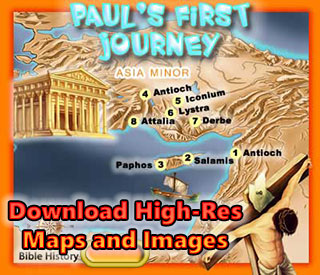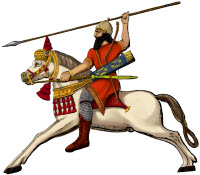|

|
|
|
|
Exploring Ancient Iran: The Kingdom of Persia and Its Amazing Empire
The story of ancient Iran is a tale of powerful kingdoms, amazing achievements, and vast empires that shaped the history of the world. Known for its rich culture, impressive art, and strong military prowess, ancient Iran, or Persia, was home to one of the greatest civilizations in history. Today, Iran’s influence continues, but it is fascinating to look back at how this incredible empire grew and flourished. Let’s embark on a journey through time to explore the Kingdom of Persia, its remarkable empire, and the legacies it left behind.
The Rise of the Persian Empire: The Achaemenid Dynasty
The history of Persia can be traced back to the Achaemenid Empire, which was founded by Cyrus the Great in the 6th century BCE. This empire would go on to become one of the largest and most powerful in ancient history, stretching from modern-day Iran all the way to parts of Greece, Egypt, and India.
-
Cyrus the Great (circa 600-530 BCE) is one of the most famous figures in Persian history. He united the various Persian tribes and created the first Persian Empire. Cyrus is known for his fair and tolerant rule, especially toward the peoples he conquered. Rather than forcing them to abandon their customs and beliefs, he allowed them to practice their religions and traditions. His most famous act of tolerance was allowing the Jews, who had been exiled to Babylon, to return to their homeland in Jerusalem.
-
Under Cyrus’s leadership, the Persian Empire expanded rapidly. By the time of his death in 530 BCE, the Persian Empire had conquered much of the Mesopotamian region, including Babylon, and reached into parts of Central Asia and Asia Minor (modern-day Turkey).
The Glory of the Achaemenid Empire: Darius and Xerxes
After Cyrus the Great, his son Cambyses II briefly ruled Persia before his death in 522 BCE. It was under Darius the Great (ruling from 522 to 486 BCE) that the empire reached its peak. Darius expanded the empire further, introduced major administrative reforms, and made great advances in culture and infrastructure.
-
Darius I is often remembered for his ability to organize such a vast empire. He divided the empire into regions called satrapies, each governed by a satrap (governor). This system helped Persia manage its vast lands more effectively, as local leaders could deal with issues in their region while still following the central government’s laws.
-
Darius also undertook massive building projects, including the construction of the famous Persepolis, the ceremonial capital of the Persian Empire. This magnificent city was filled with grand palaces, stunning artwork, and towering columns. Persepolis became a symbol of the empire’s greatness and wealth.
-
Darius is also known for his military campaigns. One of the most famous events in Persian history occurred during his reign: the Battle of Marathon (490 BCE). The Persian army attempted to invade Greece, but the Greek forces, though smaller in number, managed to defeat the Persians. This marked the beginning of a long rivalry between Persia and Greece.
-
After Darius’s death, his son Xerxes I (ruling from 486 to 465 BCE) continued the struggle against Greece. The most famous event of his reign was the Battle of Thermopylae (480 BCE), where a small group of Greek soldiers, led by King Leonidas I of Sparta, made a heroic stand against the Persian army. Although the Persians ultimately won the battle, the event became a symbol of resistance and bravery in Greek history.
The Decline of the Persian Empire: Alexander the Great
Although the Persian Empire was vast and mighty, it eventually faced challenges that would lead to its downfall. The empire was weakened by internal strife and the growing threat of external enemies.
-
In the 4th century BCE, Alexander the Great of Greece, a military genius and conqueror, set his sights on Persia. After defeating the Persian army at the Battle of Issus in 333 BCE, Alexander continued his march eastward, eventually conquering the Persian heartland and defeating the last Persian king, Darius III, at the Battle of Gaugamela in 331 BCE.
-
The fall of the Achaemenid Empire marked the end of the Persian rule for a time. Alexander’s conquest led to the Hellenistic period, where Greek culture and influence spread throughout the Persian lands. After Alexander's death, the Persian Empire was briefly ruled by his successors, but it would not regain its former power.
Cultural Achievements of Ancient Persia
Though the Persian Empire eventually fell, its cultural legacy has had a lasting impact on world history. The Persians were known for their impressive advancements in art, science, engineering, and architecture. Here are just a few of their many achievements:
-
Art and Architecture: The Persians were master builders. The ruins of Persepolis stand as a testament to their skill in architecture. The Persian palaces were adorned with intricate carvings, massive stone pillars, and grand staircases. The city of Susa and the tombs of Persian kings, such as Cyrus’s tomb, still stand as reminders of their architectural genius.
-
The Persian Royal Road: The Persian Empire built an extensive network of roads, which were used for trade and communication. The Royal Road, stretching from Susa in Persia to Sardis in Lydia (modern-day Turkey), was a vital trade route that allowed merchants, soldiers, and messengers to travel across the empire with speed and efficiency. The road was about 1,500 miles long and helped unify the empire.
-
Zoroastrianism: One of the most important religious contributions of Persia was Zoroastrianism, founded by the prophet Zoroaster (or Zarathustra). This ancient religion focused on the worship of Ahura Mazda, the supreme god, and emphasized the importance of good thoughts, good words, and good deeds. Zoroastrianism influenced many later religions, including Judaism, Christianity, and Islam.
-
Persian Art and Literature: Persian art and literature also flourished. Persian poets, such as Ferdowsi, wrote epic poems that are still celebrated today. Persian art often depicted royal life, hunting scenes, and elaborate nature motifs, all showcasing the wealth and sophistication of the empire.
The Legacy of Persia
Even though the Persian Empire came to an end, its influence never truly disappeared. Persia (modern-day Iran) has remained a central figure in the Middle East throughout history, with its rich cultural traditions continuing to shape the region today. The Persian language, Farsi, and many aspects of Persian culture remain strong in Iran and the surrounding regions.
The Sassanian Empire (224–651 CE), which arose after the fall of the Achaemenid Empire, was the last great Persian empire before the arrival of Islam. The Sassanian Empire preserved many aspects of Persian culture, including Zoroastrianism, and helped lay the groundwork for the Islamic civilization that would later rise in the region.
Conclusion: The Enduring Impact of Ancient Persia
The Kingdom of Persia, through the Achaemenid Empire and beyond, was one of the greatest civilizations of the ancient world. From its remarkable leaders like Cyrus the Great and Darius the Great to its cultural achievements in art, architecture, and religion, Persia’s legacy is still felt today. Persia’s vast empire, which spanned continents and brought together a variety of peoples, left a lasting imprint on world history. Its influence on governance, military strategy, culture, and religion continues to be celebrated, and the story of ancient Persia is one that remains essential to understanding the history of the Middle East and the world.
Tags: Ancient History Middle East History Ancient Persia Iran Persian Empire Cyrus the Great Darius the Great Achaemenid Dynasty Zoroastrianism Persepolis Persian Culture Alexander the Great Ancient Civilizations
Kid's Bible Maps
Bible History Online
The Geography of the Bible
© Bible History Online (https://bible-history.com)
Made by Network Local

Kids Bible Maps
About
Us
Contact Us
To
Parents
To
Teachers
Kids Bible Blog
Using Our Maps
Mission
Statement
Doctrinal
Statement
Instructions
Popular Bible Maps
The Journey of Abraham
Moses and the Exodus
Joshua and the Land
The Kingdom of David
The Kingdom of Solomon
Israel in Jesus' Time
Paul's First Journey
The Land of Israel
The Land of Egypt
The Land of Assyria
The Land of Babylon
The Land of Persia
The Land of Greece
The City of Rome
Noah's Ark and Mt. Ararat
The Tower of Babel
The Old Testament World
The New Testament World
Ancient Empires
Moses and the 10 Plagues
Ancient Peoples
The 10 Commandments
The 12 Tribes of Israel
The Ministry of Jesus
Bible Stories with Maps
Daniel in the Lions Den
David and Goliath
Baby Moses
Jesus and the Little Children
Coloring Book Images
Coloring Book
Donkey
Camel
Lamb
Noah's Ark
Noah's 3 Sons
Abraham
Sheep
Lion